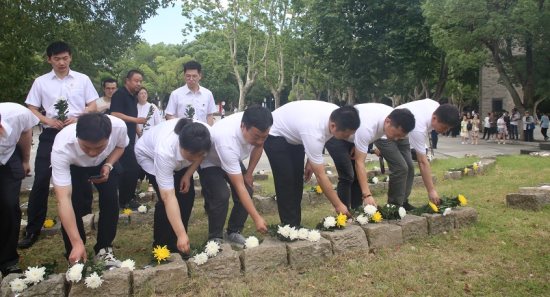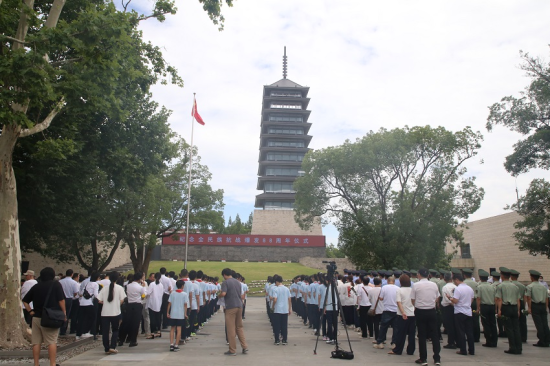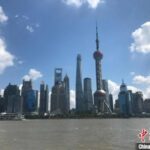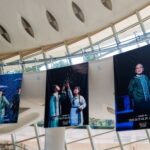This year marks the 80th anniversary of the victory of the Chinese People’s War of Resistance Against Japanese Aggression and the World Anti-Fascist War. To commemorate the 88th anniversary of the outbreak of the nationwide resistance and to fulfill the mission of revolutionary memorials in preserving the legacy of red culture, the Shanghai Songhu Anti-Japanese War Memorial Hall has recently organized a series of commemorative events.
At 10 a.m. on the 7th, the Shanghai Songhu Anti-Japanese War Memorial Hall held a ceremony in sync with other national war memorials to mark the 88th anniversary of the outbreak of the nationwide resistance. The Victory Square was filled with a solemn atmosphere as over 150 attendees, including party members, citizens, and students, gathered to reflect on that monumental period of history.
During the ceremony, attendees stood in silence as the national flag was raised and the national anthem played, its stirring melody resonating across the square and stirring patriotic emotions. This was followed by a moment of silence to honor the heroes who sacrificed their lives in the war, along with the laying of wreaths. Finally, participants walked slowly toward the Monument to the Unknown Heroes to place flowers, paying tribute to the sacrifices of the martyrs.
Recently, the Shanghai Songhu Anti-Japanese War Memorial Hall collaborated with the Baoshan District Children’s Palace to host an immersive red-themed book reading and sharing session. Young pioneers recalled and reflected on history through reading discussions, ideological education classes, and screenings of wartime documentaries.
During the reading session, children vividly recounted wartime stories from books, transporting listeners back to the turbulent era. In the ideological education class, teachers explained the spirit of resistance, helping children understand the hard-won nature of today’s peaceful life.

To commemorate the 14-year struggle of the resistance, the Shanghai Songhu Anti-Japanese War Memorial Hall launched the “Walking Red Classroom” initiative in early July, bringing two special exhibitions—”The Children’s Troupe: A Miracle Flower in the Bloodstained War” and “Bloody Skies: The Chinese Air Force and the Shanghai Resistance”—to the Jinggangshan Revolutionary Museum. This cultural dialogue spanning 800 kilometers began in the revolutionary heartland of Jinggangshan. Through rare historical materials and immersive storytelling, the exhibitions vividly portrayed the grand narrative of the nationwide resistance along two themes: “Children’s Cry for Salvation” and “The Air Force’s Heroic Battles,” allowing visitors to reflect on the core spirit of resistance—”salvation, revolution, and creation”—on Jinggangshan’s red soil.
The director of the Shanghai Songhu Anti-Japanese War Memorial Hall stated that these events aim to inspire people to draw strength from history and strengthen their convictions by preserving the legacy of red culture. In the future, the memorial will continue to uphold its role as a revolutionary institution, ensuring that the spirit of resistance shines even brighter in the new era.






